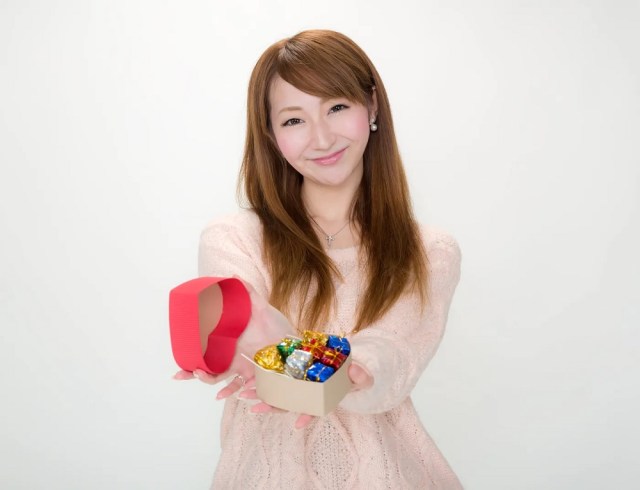
There’s more to Valentine’s chocolate in Japan than the infamous “obligation” type.
Every year when Valentine’s Day rolls around, you’ll hear a lot of talk about giri choco, or “obligation chocolate.” In Japan, it’s women who give gifts to men for Valentine’s Day, and giri choco is the chocolate given to platonic male co-workers as a general-purpose thank-you for any incidental help in day-to-day office life.
Giri choco isn’t the only class of Valentine’s Day sweets presents with its own name, though, so today, let’s take a look at some of the others with an assorted sampler of Japanese vocabulary.
1. Giri choco: “obligation chocolate” (kind of)
But first, let’s take another look at the meaning of giri choco. The Japanese word giri can translate as “obligation,” and that definitely feels like the right rendering when talking about giri choco in the sense of it being an annual hassle for a lot of Japanese women. That said, giri, which can also translate as “duty,” can be used in the connotation of “doing right by somebody” or otherwise showing someone legitimately due courtesy, so “giri choco” doesn’t always carry quite the oppressive weight that “obligation” does in English, which ties in to how the practice isn’t something that everyone hates all the time.
2. Honmei choco: “favorite chocolate”
That’s “favorite” as in the likely winner or most probable candidate. Honmei choco is chocolate that a woman gives to the guy she has genuine romantic feelings for, such as her boyfriend, husband, or the object of her not-yet-confessed-but-hopefully-soon-to-be-requited affection.
3. Tomo choco: “friend chocolate”
For a long time, honmei and giri were pretty much the only two major kinds of Valentine’s Day chocolate in Japan. But as women were browsing through store selections, picking out economically priced giri choco and fancier honmei choco, some of them also started picking up some sweets to give to their female friends. Thus was born tomo choco (from tomodachi/friend), letting girls enjoy being on the receiving end of Valentine’s Day chocolate presents.
4. Jibun choco: “self chocolate”
And hey, if you’re already at the store to buy chocolate for your boyfriend, girlfriends, and coworkers, why not treat yourself to something too? Those self-bought, self-given, and, most importantly, self-eaten sweets are known as jibun choco (jibun meaning “one’s self”).
5. Kazoku choco: “family chocolate”
Originally, Valentine’s Day was primarily something only the young and cosmopolitan celebrated in Japan. As time’s gone by, though, it’s become something that young and old, city dwellers and country folk alike look forward to. Initially, intra-family chocolate gifting was pretty much only wives and daughters giving chocolate to the household dad, but now some women give chocolate to other members of their family (kazoku) too.
6. Gyaku choco: “reverse chocolate”
You’ll notice that so far we’ve only talked about women giving chocolate. That’s because Japan has a separate day, White Day on March 14, when men give thank-you gifts back to the women who gave them Valentine’s Day chocolate. There are some guys in Japan, though, who give chocolate to women on Valentine’s Day, which is called gyaku chocolate (gyaku meaning “reverse”). Since it’s not the norm, giving gyaku choco has a high chance of delivering a genuine surprise, and with the selection of chocolate in stores being bigger at Valentine’s Day than White Day, gyaku choco also lets you choose some extra-special sweets.
7. Ore choco: “my chocolate”
“Hey, wait a second! We already covered giving chocolate to yourself. You said it’s called ‘jibun choco!’”
First, let me compliment you on how quickly you retained that vocabulary, but ore choco is different from jibun choco, though. Ore means “I,” so in a lot of ways it’s interchangeable with jibun/one’s self. The key difference, though, is that ore is a very masculine way of speaking, and so ore choco is Valentine’s Day chocolate that a guy buys for himself. Maybe he’s single and not expecting any chocolate from the ladies in his social circle, or maybe he just found some limited-time chocolates he really wants to eat, and doesn’t want to leave things up to chance by keeping his fingers crossed that his girlfriend happens to pick those exact ones to give to him.
As Japanese society and language evolves, we’ll probably start seeing even more words to describe different kinds of Valentine’s Day chocolate. For now, though, it’s a good reminder that there’s no wrong way to celebrate as long as it leaves a sweet flavor on your taste buds and a happy feeling in your heart.
Top image: Pakutaso
Insert images: Pakutaso (1, 2, 3, 4)
● Want to hear about SoraNews24’s latest articles as soon as they’re published? Follow us on Facebook and Twitter!
Follow Casey on Twitter, where he’s always hungry for/in love with linguistics.